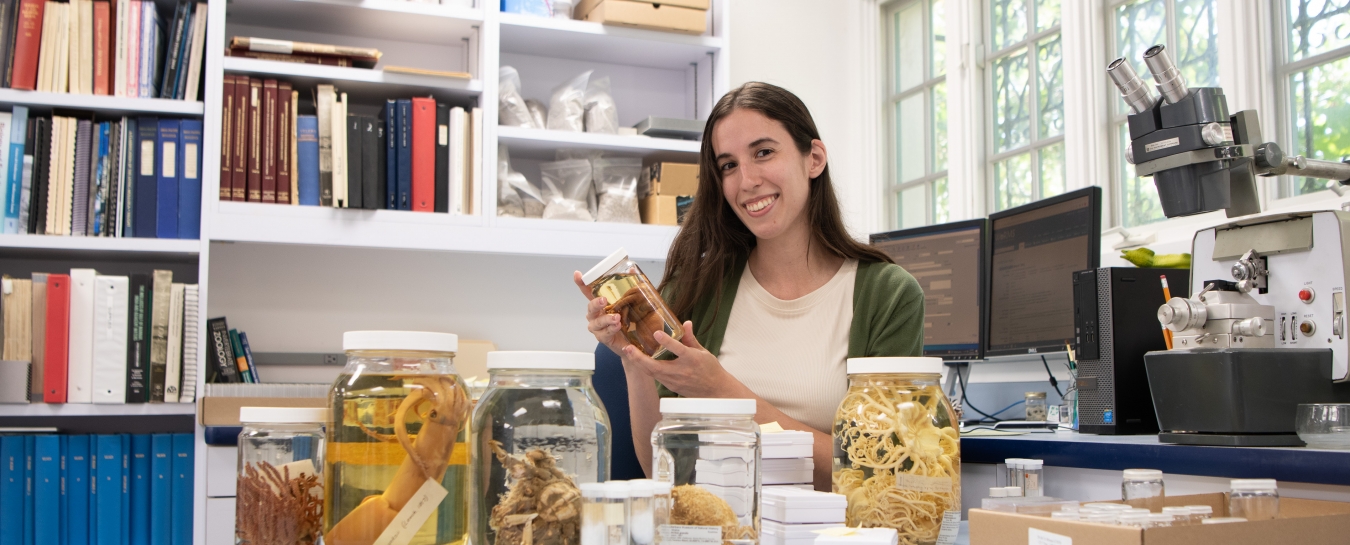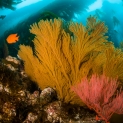Digitizing the Uncataloged: Making Marine Invertebrates Accessible
My name is Alexandria Gour, and I’m a curatorial assistant in the Department of Invertebrate Zoology at the Museum. Since I began working at SBMNH last year, my average day as a curatorial assistant revolves entirely around cataloging and rehousing collection material that falls under the Digitizing Invertebrates (DigIn) grant.
Funded by the National Science Foundation, the focus of DigIn is to digitize uncataloged non-shell marine invertebrate specimens and make the associated information available online. The Museum is one of 22 institutions around the country working to make our collections more accessible under this grant. Invertebrates account for nearly 75% of described marine species and play an integral role in ocean ecosystem functioning. Yet only 1.5% of North American marine invertebrate collection records are digitally available. Digitization efforts under DigIn will more than double the amount of marine invertebrate records currently accessible from non-federal collections.
When our department first began working under this grant in November 2020, there were an estimated 100,000 grant-relevant lots (multiple specimens cataloged together because they share identification, date, and locality data) to be digitized. Now, nearly three years into the grant, we have cataloged over 45,000 lots and are left working with our two largest groups: segmented worms (also known as annelids) and a group of colonial, mostly-marine organisms called bryozoans. Although we faced constraints from the pandemic, we’re making excellent progress and our institution is one of the top contributors to records digitized under the grant thus far.
This summer the Society for the Preservation of Natural History Collections (SPNHC) hosted their 38th annual conference and welcomed hundreds of established and emerging museum professionals to San Francisco. Attendees represented natural history collections from various countries around the world, and many traveled thousands of miles to participate in workshops, symposia, field trips, and networking events centered around the care and management of natural history collections.
I was excited for the opportunity to represent the Museum at SPNHC with Associate Curator and SPNHC Member-at-Large Vanessa Delnavaz, M.A., and share what our department has accomplished. Together, Vanessa and myself presented our department’s progress under the grant, our average workflow, the challenges we faced, and some of the discoveries made from old collection holdings. View the video of our presentation to learn more!
As a curatorial assistant and emerging museum professional, attending SPNHC San Francisco and presenting within the Digitizing Marine Invertebrate Collections Symposium with Vanessa was the opportunity of a lifetime. I am immensely proud to have contributed to the digitization efforts undertaken by the SBMNH Department of Invertebrate Zoology under the DigIn grant, and as I navigate my future in the natural history museum field I hope to continue contributing to collection data accessibility through digitization. I also hope to continue to connect with others passionate about collections care through the exchange of information and ideas at meetings like SPNHC San Francisco.






1 Comment
Post a CommentCongratulations, Alexandria and Vanessa! Wow, 45 thousand lots is a lot of digitization. I liked getting to see all of the images included in your presentation as well.